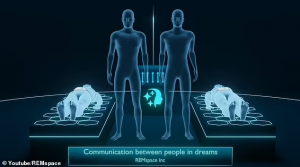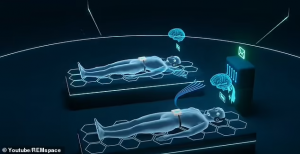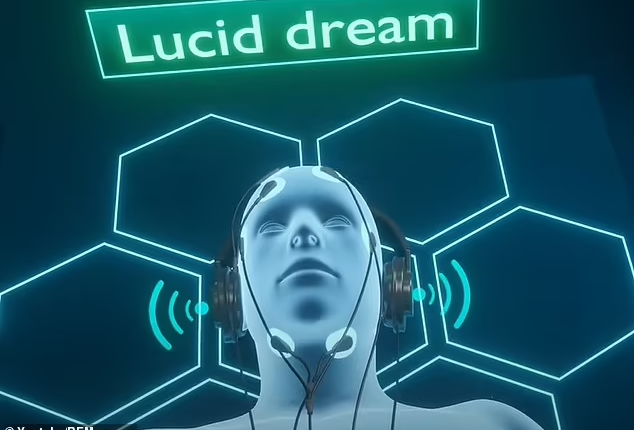Messages Shared in Slumber
Breaking boundaries as technology brings dream-to-dream communication into reality.
Imagine this: you’re deep in a dream, wandering around in a surreal world of your own creation, and then suddenly, you hear a word. Not from a talking tree or a mysterious dream character, but from a real, living person who’s also asleep, miles away, dreaming their own dream. Sound like something out of a sci-fi novel? Not anymore. In 2024, two individuals became the first people to exchange a message while asleep, thanks to the power of lucid dreaming and some cutting-edge technology. Let’s dive into this mind-bending event.
Lucid Dreaming Leveling Up Communication
We’ve all heard of lucid dreaming—being aware that you’re dreaming while it’s happening. For years, lucid dreamers have been able to control their dreams to a certain extent, exploring vast worlds, flying, or even solving real-world problems. But communicating with someone else, in real-time, while both of you are asleep? That’s next-level. And that’s exactly what happened in this groundbreaking experiment conducted by REMspace, a California-based startup specializing in sleep technology.
Using a mix of Wi-Fi, sensors, and custom apparatus, they managed to facilitate a real conversation—or rather, a single-word exchange—between two participants who were both in a lucid dream state. The word exchanged? Zhilak. It may sound a little strange, but that’s the beauty of this experiment: the word was generated from a unique dream language called Remmyo, crafted specifically for the test.
How They Pulled It Off
The participants in this experiment weren’t just your average sleepers; they were experienced lucid dreamers, which means they’ve had practice staying aware during their dreams. But even with their expertise, this type of communication had never been attempted before. So how did REMspace make it happen?
It all started with carefully tracking their brain activity. Lucid dreaming happens during the REM stage of sleep—the phase where dreams are the most vivid. With their high-tech apparatus monitoring the dreamers’ brain waves, the researchers were able to detect when they entered the lucid state.

Once they were lucid, the dreamers received the word “Zhilak” through their earbuds. One dreamer heard the word and repeated it out loud in their dream. This was captured by the sensors, and about eight minutes later, the second dreamer entered their own lucid dream and received the same word. They also repeated it. Boom—message sent and received, all while sound asleep.
Sci-Fi to Reality
Dream communication feels like the kind of thing you’d see in movies like Inception—but this experiment proves we might not be so far off from having entire conversations while snoozing. Michael Raduga, CEO of REMspace, emphasized how this breakthrough could change how we think about sleep and communication in the future.
Raduga is confident that dream-to-dream communication will open doors to countless new applications, particularly in mental health. Imagine helping people confront their fears, practice new skills, or even attend meetings in their sleep. Okay, maybe that last one isn’t so dreamy, but you get the point: this could change everything.

What’s Next Dream Therapy or Night School?
If two people can exchange a single word while dreaming, who’s to say we can’t exchange entire conversations? The implications are enormous. Some experts suggest that dream therapy could be one of the first applications. People suffering from anxiety, PTSD, or depression might be able to work through their issues while asleep, with a therapist guiding them through the dream.
Another idea floating around is sleep learning. What if you could attend a class or practice a new language while dreaming? Instead of scrolling through TikTok or binging Netflix before bed, you could use that time to improve your skills. Sounds efficient, right? While this might still be years away, REMspace’s experiment is the first step toward making it a reality.
But Is It Real Science?
You might be wondering—how legitimate is all of this? After all, the idea of communicating through dreams sounds pretty far-fetched. Right now, REMspace’s breakthrough is still awaiting broader scientific validation. It’s one thing to succeed in a controlled experiment with experienced lucid dreamers, but replicating this in the general population? That’s going to take more research.
Scientists are currently reviewing the results, and further experiments will need to be conducted before this becomes mainstream. Still, the fact that it happened at all has experts in the field buzzing. If these findings hold up, it could be a game-changer for sleep research.
So What Exactly Is Lucid Dreaming Anyway?
Before we get too carried away, let’s take a step back and look at what lucid dreaming really is. Lucid dreaming happens when you’re aware that you’re dreaming and can sometimes control the events of the dream. It’s kind of like being a director in your own personal movie. The trick is, it’s not easy to master. Most people only have a lucid dream once in a while, and it usually takes some practice.
But once you get the hang of it, lucid dreaming can offer a lot more than just fun adventures. People use it to overcome fears, rehearse difficult conversations, and even solve complex problems. The idea that you could use it to communicate with another person is something nobody really expected—until now.
Can Anyone Do This?
If you’re already a lucid dreamer, you’re probably wondering how you can try out dream communication for yourself. Well, it’s not as simple as downloading an app just yet. The technology used in this experiment isn’t publicly available, and it requires some pretty advanced equipment. But who knows—maybe in a few years, you’ll be able to grab a dream-comm device off the shelf and chat with your best friend while snoozing away.
As for those of us who aren’t seasoned lucid dreamers? There are plenty of resources out there to help you train your brain to recognize when you’re dreaming. From keeping a dream journal to using reality checks throughout the day, lucid dreaming is definitely something you can learn with time and practice.
Dream Communication in Pop Culture
It’s not surprising that this kind of experiment feels familiar. We’ve seen dream communication in movies, TV shows, and books for decades. From Inception to The Matrix, pop culture has always been obsessed with the idea that our dreams might hold more power than we realize. And now, real-life scientists are bringing those ideas into the real world.
It’s exciting to think about how far this technology could go. What other sci-fi dreams (pun intended) are just waiting to be made into reality? Will we be able to live whole other lives in our dreams? Share memories and experiences with loved ones? The possibilities are endless.
The Ethics of Dream Communication
Of course, as with any technological advancement, ethical questions are already surfacing. What could dream communication mean for privacy? If people can send and receive messages in their sleep, will we need to set boundaries for how and when these messages are sent? Could this technology be used to manipulate or influence someone while they’re unconscious? These concerns may sound like the plot of a dystopian thriller, but as this technology evolves, these are real conversations we’ll need to have. Ensuring ethical safeguards around dream communication will be essential as it moves from a cool experiment to a possible everyday tool.
The Future of Dreams
Whether or not dream communication takes off as quickly as REMspace predicts, one thing is clear: the way we think about dreams is changing. What used to be a purely personal, subconscious experience is now being studied as a potential avenue for new forms of communication and therapy. Who knows, maybe in a few years, we’ll be scheduling dream dates and sleep meetings as part of our regular routine. Until then, the dream world remains a fascinating, mysterious place—and with experiments like this one, we’re getting one step closer to truly understanding its full potential. Sweet dreams!

